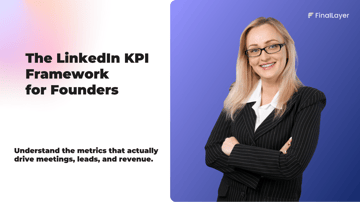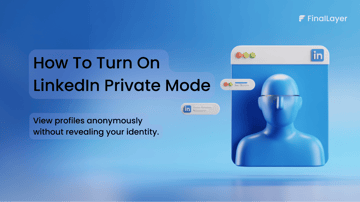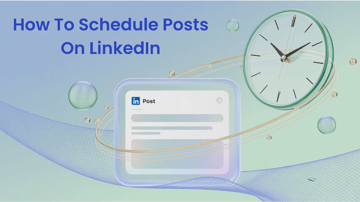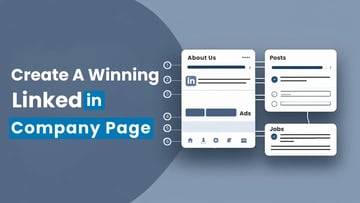You could have the best skills in the world, but if your LinkedIn profile doesn’t appear in search results, recruiters will never find you.
Today, LinkedIn’s search bar is one of the most valuable career tools in the world.
Recruiters use it to find candidates. Clients use it to find experts. Companies use it to discover talent.
Optimizing your profile helps you:
- Appear in more recruiter searches
- Show up for role-specific keywords (e.g., “React developer,” “Data analyst Python,” “Brand strategist”)
- Increase your LinkedIn visibility across search, feed, and people suggestions
- Build credibility signals that push your profile higher in the results
How LinkedIn Search Actually Works
LinkedIn’s internal search engine works like a mix of Google SEO + ATS resume scanning.
1. Keyword Accuracy
LinkedIn checks whether your headline, About section, job titles, and skills match the terms recruiters are searching for. The closer your profile matches those keywords, the higher you rank.
2. Profile Strength
A complete profile photo, headline, summary, experience, skills, education, and location give LinkedIn enough context to categorize you correctly. Incomplete profiles often struggle to show up.
3. Credibility Indicators
Endorsements, recommendations, your engagement level, and the quality of your network help LinkedIn understand whether your profile is trusted and active in your field.
4. Activity Signals
Recently active profiles appear more frequently. Posting content, updating your sections, and interacting on LinkedIn improve your relevance score.
5. Recruiter Filters
When recruiters search, they filter by location, industry, experience level, skills, and job titles. Profiles that align with these filters rise to the top automatically.
The All-Star Profile Strategy (Step-By-Step)
Your goal is to fill every section with high-intent keywords, credibility signals, and role-specific proof.
Below is the complete, layered system.
1. Optimize Your Headline for Keyword Intent
Your headline is the highest-ranking field on your entire profile.
Avoid vague lines like:
❌ “Passionate about building things”
❌ “Seeking opportunities”
❌ “Aspiring data scientist”
Instead, use a structure that hits multiple keyword variations:
Formula:
Primary Role + Core Skills + Tools/Domain + Value Proposition
Examples:
Frontend Developer (React, Next.js) | UI Performance | Building Fast, Modern Interfaces
Data Analyst | SQL, Power BI, Python | Turning Raw Data Into Insights
Digital Marketer | Performance Marketing + SEO + Copywriting | Scaling Brands
AI Engineer | LLMs, Prompting, RAG | Building Production-Ready AI Tools
This helps you rank for:
- LinkedIn search ranking
- Appear in recruiter searches
- Role-based keywords
- Skill-based searches
Read more: How To Write Headlines That Increase Profile Views
2. Use Keyword-Optimized About Section (SEO + Story)
Your About section is your long-form SEO. Use all long-tail keywords naturally here.
Structure:
- What you do
- What problems do you solve
- What tools and skills do you use
- Proof (metrics, achievements)
- CTA
Example for SEO:
“I help companies improve LinkedIn visibility, rank higher in recruiter searches, and build credibility through a strong, optimized presence. My expertise includes keyword-rich LinkedIn summaries, ATS-friendly writing, industry-specific skills, and resume-aligned storytelling. I focus on aligning profiles with LinkedIn search ranking, professional visibility, and role-specific keywords that recruiters search for.”
This version hits major keywords for:
- LinkedIn search ranking
- appear in recruiter searches
- LinkedIn visibility
- LinkedIn optimization
- LinkedIn profile SEO
Read more: How To Write A LinkedIn Profile Summary
3. Optimize Experience With Keyword-Driven Job Titles
LinkedIn ranks job titles extremely high.
❌ Wrong:
“Engineer 1”
“Associate Consultant”
✔️ Correct:
“Software Engineer - Backend (Node.js, Microservices)”
“Marketing Strategist - SEO, Paid Ads, Analytics”
Add relevant keywords inside job titles, descriptions, and results.
4. Add All Relevant Skills
Most people add skills randomly.
You need to add:
- Industry keywords
- Job title variations
- Tool-based skills
- Long-tail keywords from your niche
Example for a data analyst:
- SQL
- Power BI
- Data cleaning
- Data visualization
- Python
- Business intelligence
- Forecasting
- Dashboard creation
More endorsements = more credibility = higher ranking.
5. Use Creator Mode & Consistent Posting to Boost Authority
Posting activates “creator signals” which influence:
- Professional visibility
- Search relevance
- Authority ranking
Posting weekly tells the algorithm:
“This profile is active, credible, and valuable.”
Content also adds keywords across your profile, boosting search SEO.
When you need help staying consistent, FinalLayer makes it easy to publish clear, professional LinkedIn posts that align with your niche and strengthen your visibility signals.
6. Add Recommendations With Keyword-Rich Language
Recommendations help reinforce your primary skills.
Ask people to include keywords like:
- “SEO specialist”
- “data analyst Python”
- “frontend developer React”
LinkedIn reads these keywords for ranking.
Read more: How to Write LinkedIn Recommendations
7. Maintain Perfect Profile Completeness
This is non-negotiable. To reach the All-Star, you need:
- Profile photo
- Headline
- About
- Experience
- Skills
- Education
- Location
- Industry
- Contact info
All-Star profiles appear more in searches.
Read more: Optimize Your LinkedIn Profile: The Complete Guide for 2025
8. Location + Industry Accuracy
Recruiters often filter by:
- Location
- Industry
If these two aren’t accurate, your ranking collapses instantly.
9. Build More Connections in Your Industry
Connections boost search results because LinkedIn prioritizes:
- 1st degree
- 2nd degree
More relevant connections = higher relevance = more discovery.
10. Use Keywords in Featured Section & Projects
Upload:
- Projects
- Portfolios
- Case studies
- Certifications
Name them using keywords:
- “SEO Case Study: Ranking for B2B SaaS Keywords”
- “Python Automation Script for Data Cleaning”
These titles help you rank for niche searches.

Conclusion
The professionals who consistently show up in search don’t treat LinkedIn as a one-time setup. They see it as a system that evolves with their skills, their industry, and the opportunities they want to attract. Small updates, new keywords, fresh achievements, and clearer positioning; these subtle refinements compound over time.
Whether you’re aiming for a new job, better clients, or more credibility, this strategy places you exactly where you deserve to be: Seen, Ranked, Discovered, and Chosen




























































